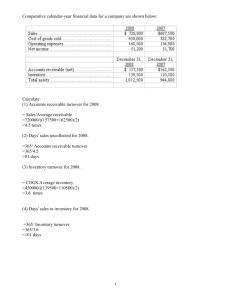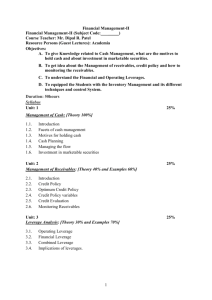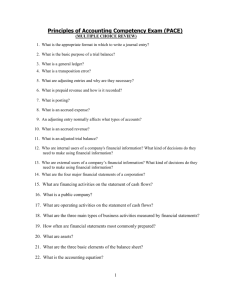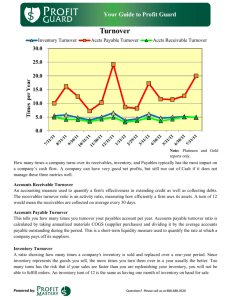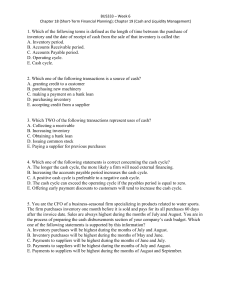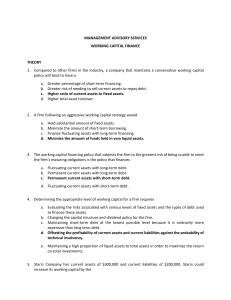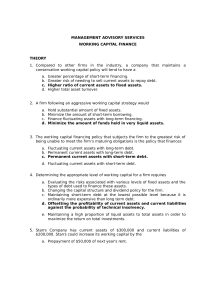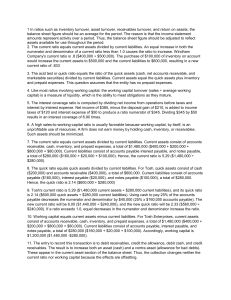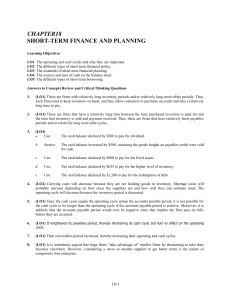Chapter 16, Short-Term Financial Management
advertisement
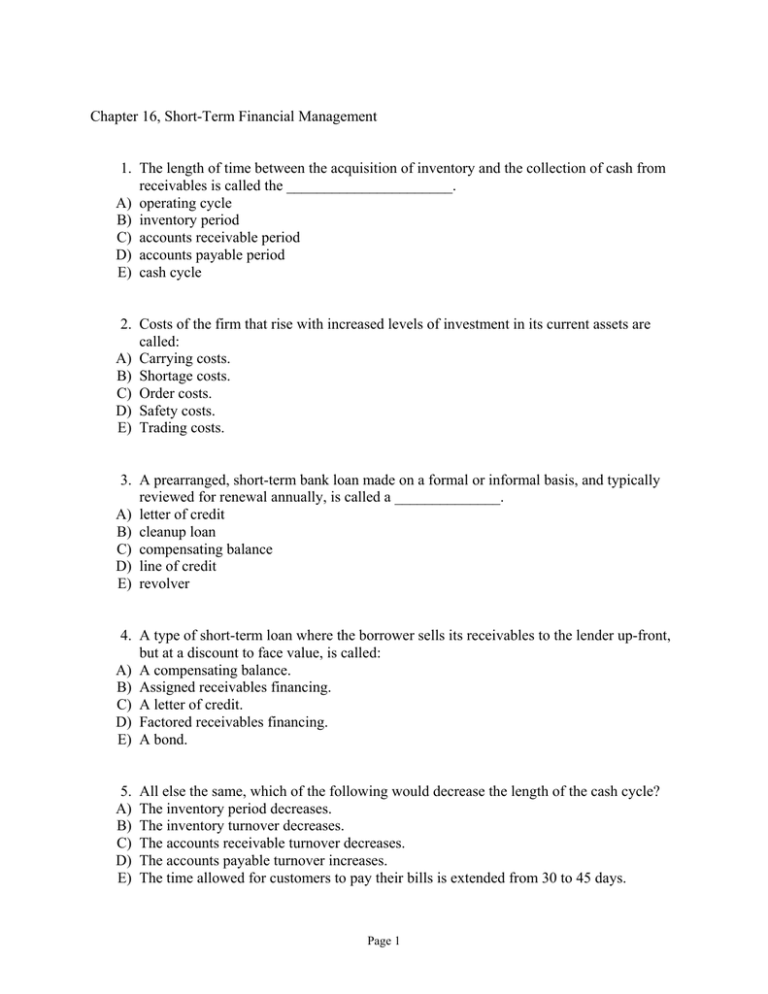
Chapter 16, Short-Term Financial Management 1. The length of time between the acquisition of inventory and the collection of cash from receivables is called the ______________________. A) operating cycle B) inventory period C) accounts receivable period D) accounts payable period E) cash cycle 2. Costs of the firm that rise with increased levels of investment in its current assets are called: A) Carrying costs. B) Shortage costs. C) Order costs. D) Safety costs. E) Trading costs. 3. A prearranged, short-term bank loan made on a formal or informal basis, and typically reviewed for renewal annually, is called a ______________. A) letter of credit B) cleanup loan C) compensating balance D) line of credit E) revolver 4. A type of short-term loan where the borrower sells its receivables to the lender up-front, but at a discount to face value, is called: A) A compensating balance. B) Assigned receivables financing. C) A letter of credit. D) Factored receivables financing. E) A bond. 5. A) B) C) D) E) All else the same, which of the following would decrease the length of the cash cycle? The inventory period decreases. The inventory turnover decreases. The accounts receivable turnover decreases. The accounts payable turnover increases. The time allowed for customers to pay their bills is extended from 30 to 45 days. Page 1 6. A) B) C) D) E) Which of the following is a source of cash, all else the same? Retiring commercial paper. Increasing accounts payable. Implementing a more lax credit collection policy. Selling inventory on credit. Renewing a committed line of credit. 7. A) B) C) D) E) All else the same, if the firm increases its cash cycle its profitability will likely: Increase. Decrease. Increase if earnings are positive. Decrease if the inventory period exceeds the accounts payable period. Not be affected. 8. If your firm's CFO arranges a $1,000,000 loan with its uncollected receivables as collateral, she has arranged ______________. A) an assignment of receivables B) a line-of-credit security arrangement C) a corporate debenture agreement D) a maturity factoring arrangement E) a conventional factoring arrangement 9. A firm has average inventory of $650,000, an inventory period of 45 days, a receivables period of 32 days, and average payables of $750,000. What is its cash cycle? A) 22 days B) 25 days C) 32 days D) 39 days E) 47 days Item Inventory Accounts receivable Accounts payable Credit sales Cost of goods sold Beginning 1,500 2,300 1,400 $18,250 $14,500 Ending 1,800 2,600 1,100 Page 2 10. A) B) C) D) What is the length of the cash cycle? 31 days 42 days 49 days 59 days Page 3
